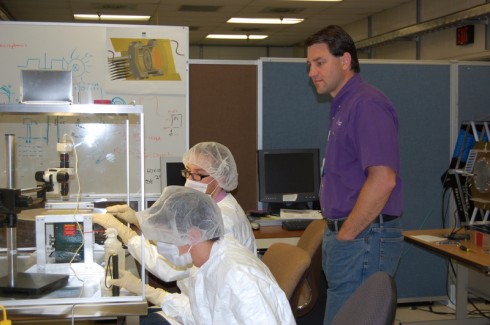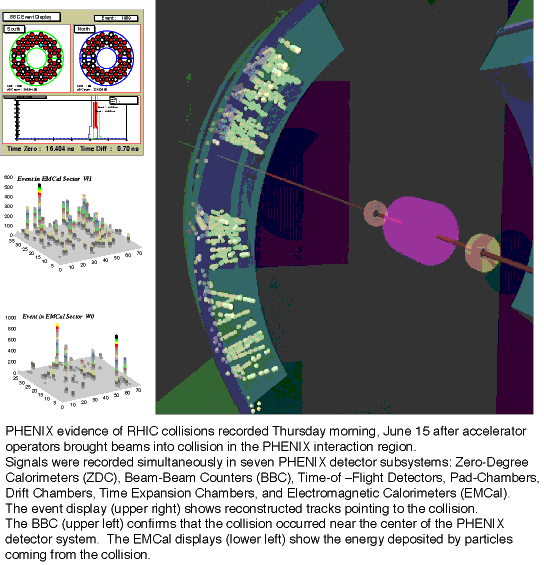Life at LLNL
Tags:
(Contribution by Brandon Coombes, Junior from Fort Worth, TX. Brandon is working at Lawerence Livermore National Lab this summer)
Security is tight here and the restrictions on what you can do at the lab are even tighter. This is what makes the world we live in here at the lab move so slow. If you need computer access, give it a couple of days. If you need a part, give it a couple of weeks. Let’s not even get started on the S word. You can’t put this word in any of your titles because of the legalities it would invoke. This word (in a whisper) is SAFETY. Let me tell you, through all the rigorous tests and processes, I can guarantee that our experiment at the lab is being performed safely.

Brandon and Tyler work with Dr. Towell, who forgot his lab coat again!
Our experiment, NIFFTE, has been going pretty well and progressing to the point that we will be sending the prototype Time Projection Chamber (TPC) to Los Alamos. This also means that there is a lot of work to do with getting our online software to work so that they can take real data when it gets there. Sarvagya Sharma has been working on getting the reconstruction of data to work correctly while also working on making a test stand for the preamp cards. Tyler Thornton’s work has been effectively paused until we know what we are going to do with Slow Controls. Dr. Qu has locked himself in the lab and is beating the Event Builder and Packet Receiver into submission. Brandon Coombes is working on a way to read out the cathode on the TPC faster, but unfortunately some parts need to be ordered and some things are needing to be fixed (Uh Oh! See 1st Paragraph). Not to worry, with our bright young minds we will be able accomplish everything this summer!
Outside of the lab, Sarvagya, Tyler, and Brandon are all staying with families from a local church here in Livermore, Tri-Valley Church of Christ. Free time for Sarvagya consists of riding his bike around trails and getting away from trails that have snakes lurking. For Tyler, he spends his time buttering up his newly endowed fiance, Holly, and also trying to beat Sarvagya and Brandon in as many variations of basketball as he can. As for Brandon, he goes home and plays Xbox 360 and continues drawing his graphic novel. One thing that has kept the mornings busy is World Cup. Tyler and Brandon come to the lab at 9 am instead of 8 on days the US team plays and they do play well (if the refs do not call ridiculous things).
That is about all we have from the West Coast. California weather beats Texas weather and the trees and hills aren’t bad either.
-Brandon

